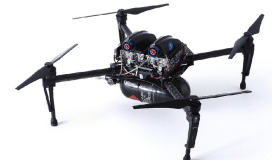Global has released a new ultrahigh-frequency (UHF) radio frequency identification tag designed to detect when its seal has been broken, while still transmitting its unique ID when interrogated. In that way, users who cannot physically see a tag can still know if the tag is there, as well as whether or not it has been tampered with.
An airline customer (which has asked to remain unnamed) approached Global with a problem that led to this product's development, explains Eric Suligoj, Global's business development director. The airline company wanted to be able to use RFID tags and handheld readers to track critical safety devices, such as life vests stored under aircraft passenger seats, but it also wanted to know if the vest packaging had been opened. If a life vest has been opened, it may no longer operate properly. For that reason, airlines must be diligent about checking those vests, in order to know not only that they are there, but also that they have not been tampered with.
While there are tamper-proof seal tags with RFID functionality on the market, these tags typically alert users that the seal has been broken simply by failing to respond to an interrogation. Such tamper-evident tags include an RF antenna running through the tag's cable tie or wire loop. The loop or cable on the tag is then attached to bags, bins or boxes that should remain closed unless it is accessed by an authorized party. If the tie or loop is broken, the tag antenna breaks with it, thereby rendering the tag unusable. Examples include other members of the Global Seal Tag series. That system works well when a user is reading a tag that the individual can see in front of him or her, the company reports.
However, that kind of solution was not enough for the airline, Suligoj says, because a tag's failure to respond could simply mean the tag is not present. The airline expected to equip its staff with handheld readers, and to dispatch those employees to walk through the airplane cabin, sweeping the reader past aircraft seats for regular inspections, without physically reaching under each seat to remove the vest and view whether it was there. Therefore, the airline needed a tag that would always identify itself (indicating the vest was present), as well as indicate whether or not it was tampered with—and be able to store maintenance information throughout the product's lifetime.
The resulting solution is the Seal edTamper UHF tag, which comes with a fastener loop containing an RFID antenna that locks around a product's enclosure or latch. If the product has not been tampered with, the tag simply responds as expected to an RFID interrogation, by transmitting its unique ID number. The loop is designed so that if it is pulled on, the loop releases on one side, rather than simply tearing in half. If the loop does pull free on one side, that action breaks the antenna contact on one side of the loop only. The tag continues to respond to RF signals, but with a modified transmission that indicates a broken seal.
The tag comes with an Semiconductors UCODE G2iM series chip. The loop or cable is designed to be rugged enough that it cannot be broken, the company reports. The tag itself is also Air Transport Association (ATA) Spec 2000-compliant. While the airline is testing the system with life vests, Suligoj says, the tag would also work in such scenarios as tracking oxygen equipment that must be stored behind enclosures above each airlines seat.
Global commercially released the tag this month, for use not only by the aerospace industry, but also other sectors that require safety and security checks but may not have the line of sight to view whether a tag is actually present. That can include tracing weapons or other critical assets and equipment on racks, for instance.



